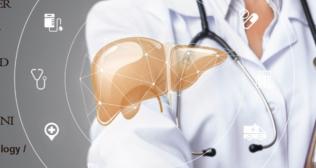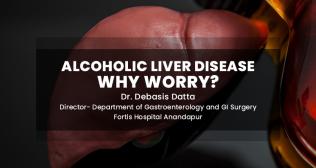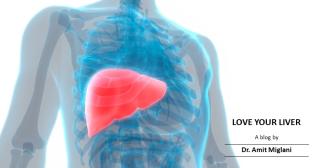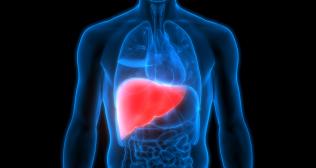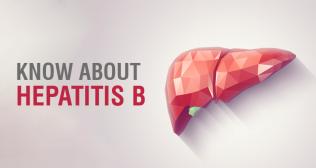
Abdominal Abscess: Causes, Symptoms, and Treatment Approaches
An abdominal abscess is a pocket of pus that forms deep within the abdominal cavity when bacteria invade normally sterile tissues. This infection can arise after surgery, trauma, or from complications such as appendicitis, diverticulitis, or peptic ulcer perforation. Left untreated, an abscess may expand, rupture, or trigger sepsis; a life‑threatening body‑wide response. Recognizing abdominal abscess symptoms, understanding abdominal abscess causes, and knowing when to seek abdominal infection treatment are essential for a safe recovery.
This guide is intended for anyone experiencing persistent abdominal pain, fever, or recent abdominal surgery. You’ll learn what an abscess is, why it forms, how to spot the warning signs, treatment options, types of abdominal abscess, and preventive steps.
What Is an Abdominal Abscess?
An abscess forms when the body’s defense system walls off an infection, creating a cavity filled with pus; a mixture of dead white blood cells, bacteria, debris, and fluid. When this occurs in the abdominal cavity; between organs, within organ tissue, or behind the peritoneum; it is called an abdominal abscess.
Common scenarios include a leak at a surgical site after bowel resection or gallbladder removal, where intestinal bacteria escape into the abdomen. A ruptured appendix or perforated ulcer spills contents that the immune system isolates into an abscess. Sizes range from small fluid pockets to large cavitations that press on nearby organs. Without drainage and antibiotics, an abscess can burst and spread infection into the bloodstream.
Abdominal Abscess Causes
Recognizing abdominal abscess causes helps identify at‑risk patients:
- Postoperative Leaks: After surgery on the intestines, liver, or gallbladder, leaks allow intestinal bacteria to seed the abdominal space.
- Perforated Organs: Appendicitis, diverticulitis, or peptic ulcers can create a hole in the gut wall, releasing bacteria.
- Adjacent Infections: Pancreatitis or pelvic inflammatory disease may spread infection beyond the original site.
- Inflammatory Bowel Disease: Crohn’s disease and ulcerative colitis can cause fistulas, allowing bacteria to escape into surrounding tissues.
- Trauma: Blunt or penetrating injuries compromise tissue integrity and introduce bacteria.
- Immunosuppression: Chemotherapy, HIV, or steroid therapy weaken defenses, making minor infections escalate.
Patients with diabetes or malnutrition and those on prolonged antibiotics are also more susceptible. Early identification of these factors speeds evaluation and treatment.
Abdominal Abscess Symptoms and Diagnosis
Early detection of abdominal abscess symptoms improves outcomes. Key warning signs:
- Localized Abdominal Pain: Dull or sharp pain, often confined to one area and worsened by movement, coughing, or deep breaths.
- Fever and Chills: Persistent temperature above 100.4°F (38°C) signals systemic infection.
- Nausea and Appetite Loss: Inflammation in the abdomen suppresses hunger and may trigger nausea or vomiting.
- Abdominal Tenderness and Swelling: The affected region may feel firm and painful to touch.
- Bowel Changes: Diarrhea, constipation, or inability to pass gas can occur depending on abscess location.
To confirm an abdominal abscess, clinicians use:
- Complete Blood Count (CBC): Elevated white blood cells indicate infection.
- Inflammatory Markers: High C‑reactive protein (CRP) or erythrocyte sedimentation rate (ESR).
- Ultrasound: Quickly identifies fluid pockets, particularly near the liver or pelvis.
- Contrast‑Enhanced CT Scan: The gold standard for locating abscesses, measuring size, and guiding drainage.
- MRI: Used when more detail is needed, especially in complex or retroperitoneal cases.
Prompt imaging leads to faster abdominal infection treatment, reducing risk of rupture or sepsis.
Treatment Approaches
Effectively treating an abdominal abscess involves draining the pus cavity and administering appropriate antibiotics. Main strategies:
Percutaneous Drainage
Under CT or ultrasound guidance, a radiologist inserts a catheter through the skin directly into the abscess. Continuous drainage eliminates pus, reduces pressure, and allows the cavity to collapse. Success rates exceed 80% when abscesses are accessible (Lee et al., 2019).
Surgical Drainage
If percutaneous access is unsafe; due to abscess location, multiloculation, or nearby vessels; surgeons perform open or laparoscopic drainage. During surgery, they repair the source of infection, such as closing a perforation, and place drains for postoperative healing.
Antibiotic Therapy
Immediate broad‑spectrum antibiotics cover aerobic and anaerobic bacteria. Regimens may include piperacillin‑tazobactam or a carbapenem. Once culture and sensitivity results return, therapy narrows to target specific organisms. Duration ranges from 2 to 6 weeks based on abscess size and patient response.
Supportive Care
Hospitalized patients receive IV fluids, pain control, and nutritional support. Monitoring vital signs, renal function, and signs of sepsis is critical during the first 72 hours. Early mobilization and respiratory exercises help prevent complications.
Combining drainage with tailored antibiotics achieves over 90% resolution rates (Smith et al., 2021).
Types of Abdominal Abscess
Knowing types of abdominal abscess guides imaging and drainage techniques:
- Intrahepatic Abscess: Within the liver, often stemming from biliary infections or bloodstream seeding; patients present with right‑upper quadrant pain and sometimes jaundice.
- Splenic Abscess: Inside the spleen; rare but serious, often linked to infective endocarditis or trauma; symptoms include left‑upper quadrant pain and referred shoulder pain.
- Pelvic Abscess: Between pelvic organs; common after gynecologic surgery or appendicitis; presents with lower abdominal pain, urinary urgency, or rectal pressure.
- Retroperitoneal Abscess: Behind the peritoneum; associated with pancreatitis, kidney infections, or spinal sources; often large and deep, requiring advanced imaging for access.
- Subphrenic Abscess: Beneath the diaphragm; usually follows upper GI surgery or perforation; may cause shoulder pain due to diaphragm irritation.
Prevention and Prognosis
While some abscesses are unpredictable, prevention focuses on controlling risk factors and early intervention:
- Aseptic Surgical Technique: Strict sterilization and antibiotic prophylaxis before and after abdominal surgeries reduce infection rates.
- Rapid Treatment of Perforations: Prompt management of appendicitis, diverticulitis, or peptic ulcers prevents abscess formation.
- Immunocompromised Care: Close monitoring, prophylactic antibiotics, and nutritional support for at‑risk patients.
- Postoperative Surveillance: Regular exams and imaging for early detection of leaks or fluid collections.
With timely drainage and antibiotics, most patients recover fully. Complications such as fistula formation, recurrent abscesses, or chronic pain occur in fewer than 10% of cases. Long‑term outlook depends on abscess location, patient health, and promptness of treatment.
Frequently Asked Questions
Q1: What distinguishes a stomach abscess from other types?
Ans. A stomach abscess specifically involves pus forming in or around the stomach lining, often due to peptic ulcer perforation or pancreatitis extending into the stomach area.
Q2: Can small abscesses resolve with antibiotics alone?
Ans. Very small, well‑localized abscesses (<3 cm) may respond to antibiotics without drainage, but most require percutaneous or surgical intervention to prevent rupture.
Q3: How quickly should drainage occur?
Ans. Ideally within 24–48 hours of diagnosis to minimize risk of spread, sepsis, or organ damage.
Q4: Are there long‑term effects after an abdominal abscess?
Ans. Most patients have no lasting effects. However, complications like fistulas or chronic pain can develop if drainage is delayed or incomplete.
Q5: How do I reduce my risk after abdominal surgery?
Ans. Stay mobile, follow antibiotic regimens exactly, maintain hygiene around surgical sites, and report any fever or pain promptly for evaluation.
If you experience persistent abdominal pain, fever, or unusual digestive changes, seek medical attention immediately. Early recognition of abdominal abscess symptoms, awareness of abdominal abscess causes, and prompt abdominal infection treatment are key to a full recovery.







